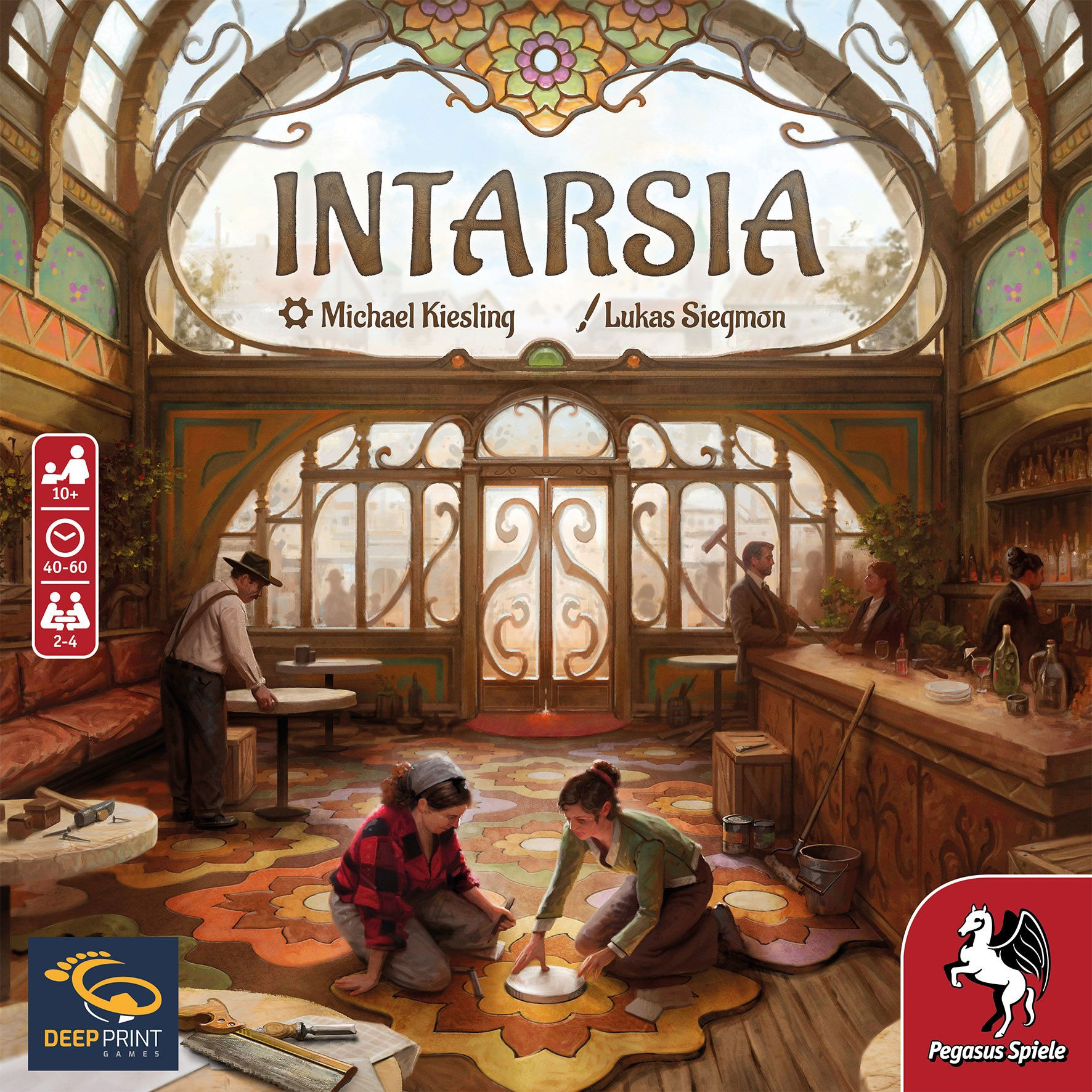
"Then there's Michael Kiesling, who strikes a happy middle ground; he has previously tasked players with carefully arranging colored "ceramic" or "glass" pieces to make mosaics or stained glass artworks. It's not as thematically exciting as Terraforming Mars or building a dinosaur island, but the theme works, and the result is pretty. In Kiesling's latest abstract creation, Intarsia, he tasks 2-4 players with placing intricately carved colored wooden pieces to assemble parquet flooring for a Parisian café over 30-60 minutes."
"Players start with a random hand of ten cards in four colors plus wilds. On your turn, you exchange 1-4 uniformly-colored cards (or wilds) for a wooden piece of corresponding color and level (1-4). A level 1 piece forms the outer portion of a flower-like decorative element. A level 2 piece forms a slightly smaller inlaid element, and a level 3 an even smaller inlaid element. Level 4 lets you build a table at the center of your "flower"."
Most abstract games either embrace minimal theme or apply tenuous thematic overlays; this design takes a middle path by applying a believable decorative theme. Two to four players place intricately carved colored wooden pieces to assemble parquet flooring for a Parisian café in 30–60 minutes. Gameplay revolves around exchanging 1–4 uniformly colored cards (or wilds) for wooden pieces of matching color and level (1–4). Level 1 pieces form outer portions of flower-like decorative elements, levels 2 and 3 create progressively smaller inlays, and level 4 builds a central table. Spending 2, 3, or 4 cards returns 1, 2, or 3 cards respectively, enabling sustained placement across rounds. A tool board presents contract tiles that define unique parquet design elements.
Read at Board Game Quest
Unable to calculate read time
Collection
[
|
...
]